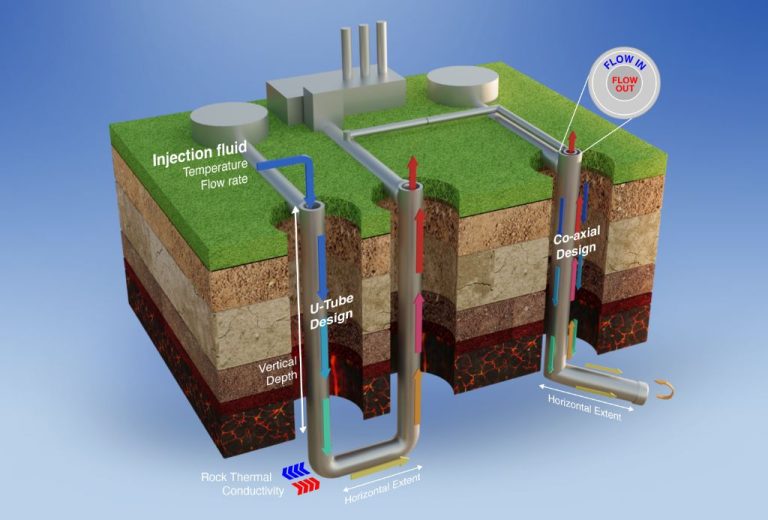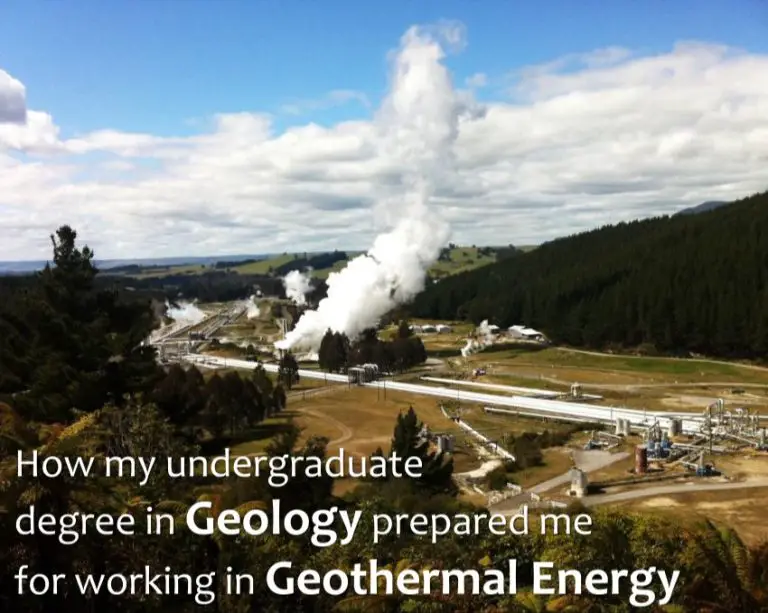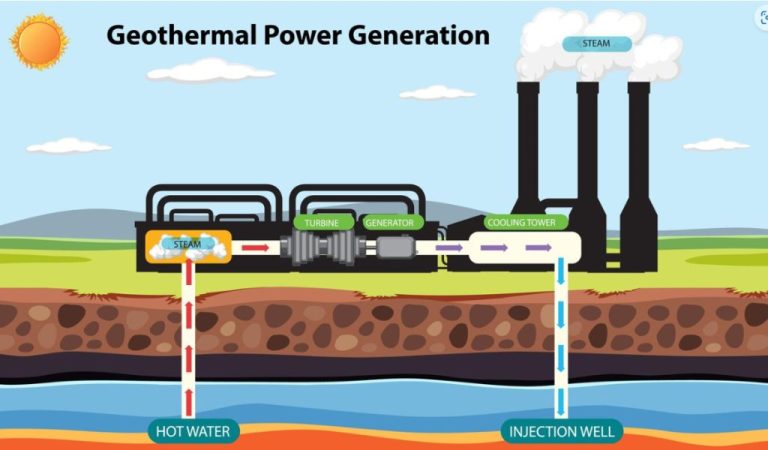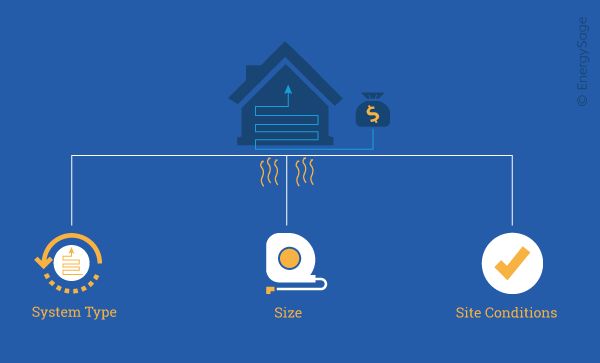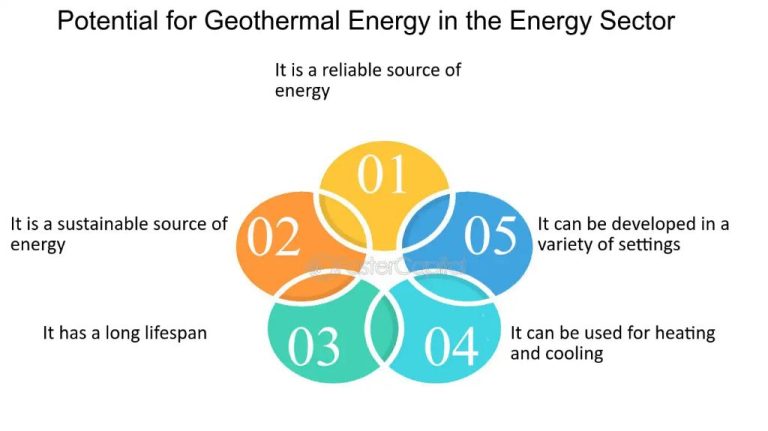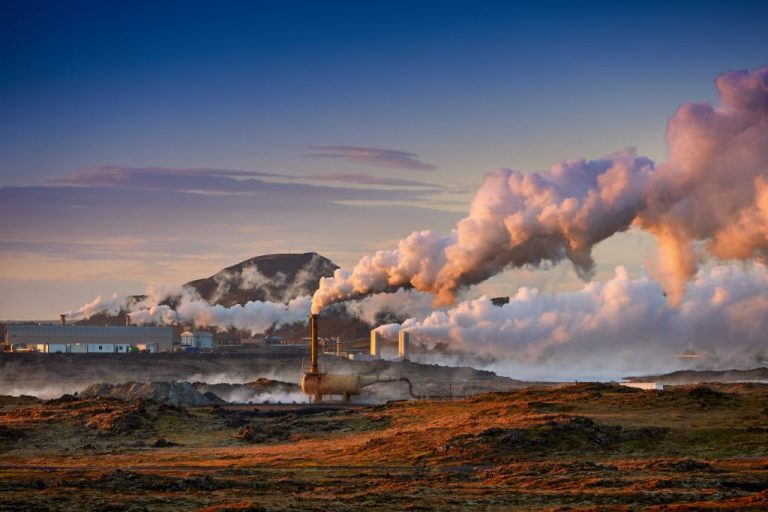Direct Use Geothermal For Heating Homes And Buildings
Are you tired of rising energy costs and looking for an alternative, eco-friendly solution to heat your home or building? Look no further than direct use geothermal heating. This innovative technology utilizes the natural heat from within the earth to provide a sustainable and cost-effective way to keep your space warm. In this blog post, we will explore the ins and outs of direct use geothermal heating, its benefits, and how it can be implemented in both residential and commercial settings. So, if you’re ready to learn more about this exciting renewable energy source, read on!
Direct Use Geothermal Systems – How They Work
Direct use geothermal systems work by accessing the heat that is naturally produced by the earth’s core through a system of pipes that are installed underground. These pipes are filled with a liquid that circulates through the system, absorbing the heat from the earth.
The heat that is absorbed by the liquid is then transferred to a heat exchanger, which is responsible for converting the energy into usable heat for your home or building. This heat can be used directly for space heating or domestic hot water.
Direct use geothermal systems are an extremely efficient way to heat your home or building. Unlike traditional heating methods, which rely on the burning of fossil fuels, direct use geothermal systems do not produce greenhouse gas emissions, making them an eco-friendly option.
In addition to their environmental benefits, direct use geothermal systems also offer significant cost savings over time. While the initial installation costs may be higher than traditional heating systems, the long-term savings that come from using renewable energy can be substantial. The U.S. Department of Energy estimates that homeowners can save between 30% and 70% on their heating and cooling bills by using a direct use geothermal system.
Direct use geothermal systems can be used in both residential and commercial settings, making them a versatile option for a variety of building types. They can be retrofitted into existing buildings or integrated into the building design of new constructions.
Installation Process – Things To Consider
Installing a direct use geothermal system requires careful planning and consideration. Here are some things to keep in mind:
1. Location: One of the most important factors to consider when installing a direct use geothermal system is the location of your property. Properties with a suitable geological profile, such as those with high levels of underground heat, are ideal candidates for direct use geothermal installation. An on-site geologist can help determine the suitability of your property.
2. Installation Method: Horizontal and vertical loop systems are the two common installation methods for a direct use geothermal system. A horizontal loop system requires more land area as it involves digging several shallow trenches, while a vertical loop system requires less land area but is more expensive due to the drilling required.
3. Building Size: The size of your building also affects the size of the system needed to sufficiently heat or cool the space. An HVAC contractor can assess your building’s heating and cooling requirements and recommend the appropriate system size.
4. System Components: A direct use geothermal system requires several components, including a ground source heat pump, heat exchangers, and distribution systems. It’s important to select high-quality components that are designed to work together for optimal performance.
5. Installation Costs: While direct use geothermal systems offer long-term cost savings, the initial installation costs can be higher than traditional heating and cooling systems. However, federal and state incentives are available to help offset these costs. It’s also important to consider the long-term savings potential of the system.
Cost And Savings Over Time – Lower Bills Ahead
Cost and savings over time are one of the biggest benefits of direct use geothermal heating. While there may be a higher initial investment when implementing this renewable energy solution, its lifespan and energy efficiency lead to lower bills in the long run. According to the Environmental Protection Agency (EPA), average annual savings for direct use geothermal heating range from 30% to 70% in comparison to traditional heating and cooling systems.
Direct use geothermal systems have lower operating costs because they require minimal maintenance once installed. The ground source heat pump, which is the heart of the system, has a lifespan of 25 years or more. Direct use geothermal systems also have lower repair costs because they have fewer moving parts than traditional systems, which means less wear and tear.
Additionally, direct use geothermal systems offer protection against rising energy costs. Traditional heating and cooling systems rely on non-renewable resources such as oil and gas, whose prices are subject to fluctuations in the global market. In contrast, direct use geothermal systems use the earth’s natural heat, which is a reliable and renewable resource that is not subject to price fluctuations.
Another way direct use geothermal systems save money is through the numerous tax incentives available to homeowners and businesses. Homeowners can qualify for a tax credit of up to 30% of the total upfront cost of installing a direct use geothermal system, while businesses may be eligible for a variety of incentives depending on their location and size.
Varieties Available For Homes And Commercial Buildings
Direct use geothermal heating offers a variety of options for both homes and commercial buildings. For residential properties, the most common type of system is the closed-loop ground source heat pump. This system utilizes a series of underground pipes filled with a special fluid that absorbs the earth’s heat. As the fluid circulates through the pipes, it transfers the heat to the heat pump located inside the home where it is converted into usable heat for the building. This type of system is particularly well-suited for single-family homes or small multi-unit dwellings.
For larger commercial buildings, direct use geothermal heating offers more advanced solutions such as open-loop systems and water-source heat pumps. Open-loop systems circulate water through underground wells and use the heat generated from the earth to warm the building. Water-source heat pumps use a similar method but draw water from nearby lakes or rivers to heat and cool the building. These systems are more complex to install and maintain but offer greater energy efficiency and cost savings over time.
Direct use geothermal heating also has the potential to generate hot water in addition to heating the building. This is achieved through the use of a desuperheater, a small component added to the heat pump that utilizes excess heat generated during the cooling process to heat water for domestic use. This added benefit further increases the sustainability and cost-effectiveness of direct use geothermal heating.
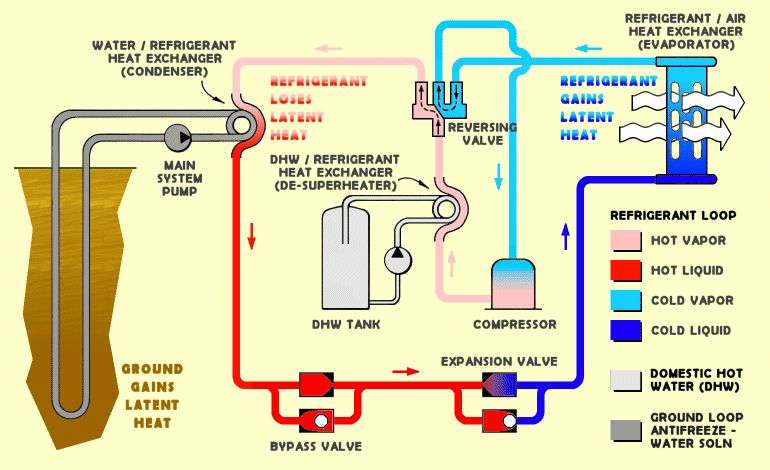
Maintenance Needs Are Very Low Once Installed
Once a direct use geothermal heating system is installed, maintenance needs are very low. The underground pipes used in closed-loop ground source heat pumps can last up to 50 years before needing replacement, and the heat pumps themselves can last up to 25 years with minimal maintenance. Open-loop systems and water-source heat pumps require more maintenance due to their more complex design, but regular check-ups and cleaning can help prevent major issues from arising.
In contrast to traditional heating systems, direct use geothermal heating requires no fuel delivery or combustion, meaning there are no potentially dangerous fumes or emissions to worry about. This also translates to lower maintenance costs over time, as there are fewer parts to replace or repair compared to other heating systems.
Overall, the low maintenance needs of direct use geothermal heating make it an attractive option for those looking to reduce their environmental impact and overall energy costs. With the potential to generate hot water and the ability to be used in both residential and commercial settings, it is a versatile and sustainable heating solution that can provide long-lasting benefits.
Environmental Benefits Of Using Earth’S Natural Heat
Using the earth’s natural heat to heat homes and buildings is not just cost-effective, but it also provides numerous environmental benefits. Direct use geothermal heating is a renewable and sustainable energy source that produces no greenhouse gas emissions, unlike traditional heating systems. This is because the system does not rely on burning fossil fuels to produce heat, which is a major source of greenhouse gas emissions and air pollution.
According to the U.S. Environmental Protection Agency (EPA), geothermal heating and cooling systems emit 97% less greenhouse gases than oil furnaces, and 93% less than gas furnaces. In addition, geothermal heating systems use significantly less electricity than traditional heating systems, resulting in lower demand from power grids and reduced carbon emissions from power generation facilities.
Another environmental benefit of direct use geothermal heating is that it requires minimal land use compared to other renewable energy sources such as wind or solar. Unlike wind turbines or solar panels, direct use geothermal systems are installed underground and do not require large, open spaces that can disrupt natural habitats and distant scenery. This also eliminates noise pollution associated with wind turbines or solar power systems.
Direct use geothermal heating also has the potential to reduce water usage compared to traditional heating systems. This is because geothermal systems use water as a heat exchange medium, rather than consuming water as a fuel source, as traditional boilers do. As a result, geothermal systems have a lower impact on local water resources, reducing the amount of water that needs to be withdrawn from streams, rivers, or other water resources.
On top of all the environmental benefits it provides, direct use geothermal heating also provides economic benefits. Geothermal energy is a reliable and abundant resource, allowing homeowners and businesses to save on energy costs over the long term. This leads to improved energy security, reduced reliance on foreign oil, and overall economic benefits to local communities and economies.
Incentives And Financing Options Available In Some Areas
In addition to the environmental and economic benefits of direct use geothermal heating, there are also various incentives and financing options available to help individuals and businesses transition to this innovative technology. Some areas offer tax credits and rebates for installing a geothermal heating system, which can significantly reduce the upfront cost of installation. For example, the U.S. Federal Government offers a tax credit of 26% of the total cost of a geothermal system, which can amount to thousands of dollars in savings.
Furthermore, some utility companies may offer financing options or low-interest loans to help cover the cost of installation. These financing options can make geothermal heating systems more accessible to homeowners and businesses, allowing them to reap the long-term benefits of this renewable energy source without breaking the bank.
It is worth noting that incentives and financing options for geothermal heating systems vary by location and may depend on factors such as the size of the system and the type of property. However, with the growing demand for sustainable energy solutions and the increasing availability of geothermal technology, it is worth exploring the options for incentives and financing in your area if you are considering a geothermal heating system for your home or business.
Overall, direct use geothermal heating is a powerful and sustainable energy source that offers a wide range of benefits for individuals, businesses, and the environment. By taking advantage of incentives and financing options, individuals and businesses can make the transition to geothermal heating more affordable and accessible, helping to build a cleaner, greener, and more sustainable future for us all.
Case Studies That Show Customer Satisfaction Levels
Direct use geothermal heating has been gaining popularity as an alternative energy source for heating homes and buildings. As a result, there have been numerous case studies that demonstrate high levels of customer satisfaction with this technology.
One such study conducted by the Geothermal Exchange Organization (GEO) found that 98% of geothermal heating system owners reported being satisfied with the performance of their system. Additionally, 95% of respondents said they would recommend geothermal heating to others.
Another case study conducted by the International Geothermal Association (IGA) examined the cost-effectiveness of geothermal heating systems over time. The study found that while the initial installation cost of a geothermal heating system was higher than a traditional heating system, the long-term savings on energy bills more than paid for the initial investment.
Furthermore, the IGA study found that geothermal heating systems have a lifespan of 25 years or more, significantly longer than traditional heating systems. This means that homeowners and businesses can enjoy the benefits of geothermal heating for many years without having to worry about replacements or significant repairs.
In terms of environmental impact, geothermal heating systems are far superior to traditional heating systems. According to the United States Environmental Protection Agency (EPA), geothermal heating systems produce 70% less carbon dioxide than traditional systems, significantly reducing the carbon footprint of homes and businesses.
Common Concerns Addressed By Industry Experts
While direct use geothermal heating offers a number of benefits, some customers may still have concerns about its feasibility and implementation. Industry experts have addressed several common concerns, providing detailed information and facts to help customers make informed decisions.
One common concern is the availability of suitable land or space for installation of a geothermal heating system. However, it is important to note that geothermal heating systems can be installed in both urban and rural areas. For residential properties, a typical system requires approximately 400-600 square feet of land while a commercial system may require more space depending on the size of the building.
Another concern is the initial cost of installation. As previously mentioned, geothermal heating systems generally have a higher upfront cost compared to traditional heating systems. However, this cost is offset by the long-term energy savings and the lifespan of the system. Additionally, there may be tax incentives and rebates available to help offset the initial cost.
Some customers may also be concerned about the maintenance of a geothermal heating system. While regular maintenance is required, it is generally less frequent and less expensive than traditional heating systems. Geothermal systems have fewer moving parts and components that require replacement, resulting in lower maintenance costs over time.
Finally, some customers may worry about the reliability of a geothermal heating system. However, the technology has been used for decades and continues to be a reliable source of heating. With proper installation and maintenance, a geothermal system can provide dependable, consistent heating for many years.
Outlook For Future Growth And New Technologies
Looking towards the future, direct use geothermal heating is poised for impressive growth and development. According to the International Geothermal Association, the global installed capacity of geothermal energy is projected to double by 2030. This growth will be fueled by increased awareness of the environmental and economic benefits of geothermal energy, as well as advancements in technology.
One area of innovation in geothermal heating is the use of hybrid systems. These systems combine geothermal heat pumps with other renewable energy sources such as solar or wind, providing an even more sustainable and efficient heating solution. Additionally, advancements in drilling techniques have led to the development of deeper and hotter geothermal resources, expanding the potential for geothermal energy production.
Another promising area of development is the use of geothermal energy for cooling as well as heating. Geothermal cooling utilizes the stable, cool temperatures found deep within the earth to provide a sustainable alternative to traditional air conditioning systems. This technology has particular potential in warmer climates where cooling demands are high.
In addition to technological advancements, policy changes are also contributing to the growth of geothermal heating. Many countries offer incentives and financial support for geothermal installation and energy production, further incentivizing adoption of this renewable energy source.
Overall, the outlook for direct use geothermal heating is bright, with continued growth and advancements in technology expected in the coming years. As more and more customers see the benefits of this environmentally-friendly and cost-effective heating solution, it is likely that geothermal energy will become an increasingly important player in the transition to renewable energy.
Resources For Learning More About Geothermal Options
For those interested in implementing geothermal heating in their home or building, there are numerous resources available to learn more about this innovative renewable energy source. One excellent starting point is the Geothermal Energy Association, a non-profit organization dedicated to promoting the development of geothermal resources through education, outreach, and advocacy.
The U.S. Department of Energy also provides a wealth of information on geothermal energy, including a comprehensive guide to geothermal heating and cooling systems, as well as information on incentives and financing options available for those looking to install geothermal systems.
For those interested in the technical aspects of direct use geothermal heating, the International Geothermal Association offers a range of resources and publications on geothermal energy, including research papers, conference proceedings, and technical reports.
In addition to these resources, it may be helpful to connect with local geothermal professionals and organizations in your area. Many states and regions have geothermal industry associations or networks that can provide support and guidance on geothermal installation and maintenance. The Geothermal Exchange Organization is one such organization, representing geothermal heating and cooling contractors, manufacturers, and drillers across the United States.
Ultimately, the key to successful implementation of geothermal heating is understanding the technology and its benefits, as well as navigating the installation and maintenance process. By taking advantage of the wealth of resources available, individuals and organizations can make informed decisions about how to best utilize this sustainable and cost-effective way of heating their homes and buildings.
Invitation For Readers To Get Their Own Free Estimates
So, if you’re ready to save on your energy bills and contribute to a cleaner environment, why not get your own free estimate for a direct use geothermal heating system? This is an excellent opportunity for property owners to explore the potential for this innovative, cost-effective and sustainable technology.
Direct use geothermal heating has immense benefits, including reduced greenhouse gas emissions, less dependence on fossil fuels, and significant cost savings over time. With access to a free estimate, property owners can explore the potential for direct use geothermal heating in their specific environment and determine the potential cost benefits.
Many reputable geothermal contractors offer free estimates for residential or commercial installations, and these estimates typically include a detailed analysis of specific property needs, existing infrastructure, installation requirements, and potential cost savings.
By investing in geothermal heating, you can save between 30 to 70 percent on your energy bills and enjoy consistent and reliable heating services regardless of fluctuating energy costs. Direct use geothermal heating operates quietly, requires minimal maintenance, and has an estimated lifespan of between 25 to 30 years.
So, why wait? Contact a geothermal contractor in your area and request your free estimate today! With the abundance of resources and information available, you can be confident that you’re making an informed decision to switch to the sustainable, cost-effective, and eco-friendly alternative that is direct use geothermal heating.
Conclusion
In conclusion, direct use geothermal systems are a viable and efficient way to tap into the earth’s natural heat for both residential and commercial buildings. We have explored how these systems work, discussed the installation process and things to consider, delved into the cost and potential savings over time, and highlighted the different varieties available. Additionally, we have touched upon the low maintenance needs of geothermal systems once they are installed, as well as their many environmental benefits. Not only that, but we have shared information on incentives and financing options available in certain areas, along with case studies showcasing high levels of customer satisfaction. Furthermore, we have addressed common concerns raised by industry experts and looked ahead at the future of geothermal technology and its potential for growth. And for those interested in learning more about geothermal options or getting a free estimate for their own property, we have provided resources to aid in further exploration. We hope this blog post has been informative and eye-opening in terms of the possibilities that lie in using direct use geothermal systems. Become part of the global movement towards sustainable heating and cooling solutions – explore geothermal today!

